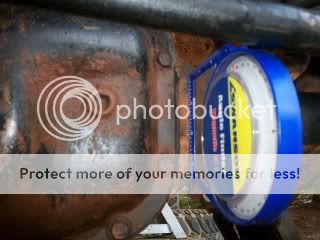treadLightly said:
So...if I have two u-joints than I can be within 1 degree in either direction but no greater than that? And it would be optimal if I had them at equal (but opposite angles)? Is that all correct?
Your close,
If your shaft has 2 ujoints on it, then you must have those angles EQUAL. These angles will be, one pointing down(t-case end) and one pointing up (axle pinion end) The reason for this is that you are trying to balance and cancel out any vibration in the ujoints. They must be equal.
If you have a double cardon shaft (like on the front shaft) that has three ujoints in it. Two by the t-case on one at the pinion. The angle of the u-joint by the pinion should be no more than one degree, with the pinion being pointed down,(like, make it straight, then move the pinion down one degree) the reason for pointing the pinion down it that when you accelerate your springs will natural wrap slightly thus rotation the pinion up that one degree, then the pinon u-joint angle will be zero. The two joints at the upper end of a double cardon shaft are designed to absorb the remaining angle.
I would go to Sears and get a magnetic angle finder, 10 bucks.
To measure angles you place the angle finder on the driveshaft (idealy it should be on the splines of the slip yoke but usually that part is to small, so find a clean undamaged part of the tube to place your angle finder on, record this angle. Now you must measure the pinion (yoke) angle. (the pinion yoke is the thingy that holds the u-joint in the axle) To measure this angle, look for the flat spot at the end of the axle tubes, right buy the differential covers, on mine they are round with a hole in the center, about as big as a 1/2 dollar. These surfaces are parallel to the pinion face. Slap on the angle finder and record this measurement. (You can also place the angle finder on the face of the pinon yoke if the d-shaft is removed.)
When I put on bigger springs on my 2000 I had a difference of 7 degrees, so I added a 6 degree shim, thus leaving me with my 1 degree down angle. This worked well for my double cardon shaft and sye.
I would also do a search, I remember seeing a picture that illustrated this very well.
Get a angle finder and may the force be with you.
Tom







